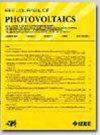Integrated Methodology for Solar Tracker Performance Assessment and Energy Loss Quantification
IF 2.6
3区 工程技术
Q3 ENERGY & FUELS
引用次数: 0
Abstract
The optimal functioning of large-scale photovoltaic installations relies on effective monitoring of tracking systems. This research presents a straightforward and effective method for monitoring performance by finding flaws that lead to energy losses. The Tracker Status Index is an effective instrument specifically engineered to assess tracker anomalies in real time. The proposed method, in conjunction with an interactive visualization tool, enables operators to swiftly identify malfunctioning trackers and assess their impact on plant performance. The approach is easily integrable into existing monitoring systems due to its clear calculation formulas and operating parameters. Validation through an authentic case study demonstrates the reliability of the Tracker Status Index in correlating tracker failures with energy loss, hence underscoring its use as a decision-support instrument for improving operational efficiency and maximizing energy production in photovoltaic systems.太阳能跟踪器性能评估和能量损失量化的综合方法
大型光伏装置的最佳功能依赖于跟踪系统的有效监控。这项研究提出了一种简单有效的方法,通过发现导致能量损失的缺陷来监测性能。跟踪器状态指数是一种有效的工具,专门用于实时评估跟踪器异常。该方法与交互式可视化工具相结合,使操作人员能够快速识别故障跟踪器,并评估其对工厂性能的影响。该方法计算公式和操作参数明确,易于集成到现有的监测系统中。通过真实的案例研究验证了跟踪器状态指数在将跟踪器故障与能量损失相关联方面的可靠性,从而强调了其作为提高光伏系统运行效率和最大化能源生产的决策支持工具的用途。
本文章由计算机程序翻译,如有差异,请以英文原文为准。
求助全文
约1分钟内获得全文
求助全文
来源期刊

IEEE Journal of Photovoltaics
ENERGY & FUELS-MATERIALS SCIENCE, MULTIDISCIPLINARY
CiteScore
7.00
自引率
10.00%
发文量
206
期刊介绍:
The IEEE Journal of Photovoltaics is a peer-reviewed, archival publication reporting original and significant research results that advance the field of photovoltaics (PV). The PV field is diverse in its science base ranging from semiconductor and PV device physics to optics and the materials sciences. The journal publishes articles that connect this science base to PV science and technology. The intent is to publish original research results that are of primary interest to the photovoltaic specialist. The scope of the IEEE J. Photovoltaics incorporates: fundamentals and new concepts of PV conversion, including those based on nanostructured materials, low-dimensional physics, multiple charge generation, up/down converters, thermophotovoltaics, hot-carrier effects, plasmonics, metamorphic materials, luminescent concentrators, and rectennas; Si-based PV, including new cell designs, crystalline and non-crystalline Si, passivation, characterization and Si crystal growth; polycrystalline, amorphous and crystalline thin-film solar cell materials, including PV structures and solar cells based on II-VI, chalcopyrite, Si and other thin film absorbers; III-V PV materials, heterostructures, multijunction devices and concentrator PV; optics for light trapping, reflection control and concentration; organic PV including polymer, hybrid and dye sensitized solar cells; space PV including cell materials and PV devices, defects and reliability, environmental effects and protective materials; PV modeling and characterization methods; and other aspects of PV, including modules, power conditioning, inverters, balance-of-systems components, monitoring, analyses and simulations, and supporting PV module standards and measurements. Tutorial and review papers on these subjects are also published and occasionally special issues are published to treat particular areas in more depth and breadth.
 求助内容:
求助内容: 应助结果提醒方式:
应助结果提醒方式:


